“Plastic fabrication plays a key role in making high-quality plastic parts. Techniques like injection molding and extrusion help produce these parts quickly and cost-effectively. The market is growing rapidly, showing its increasing importance.”
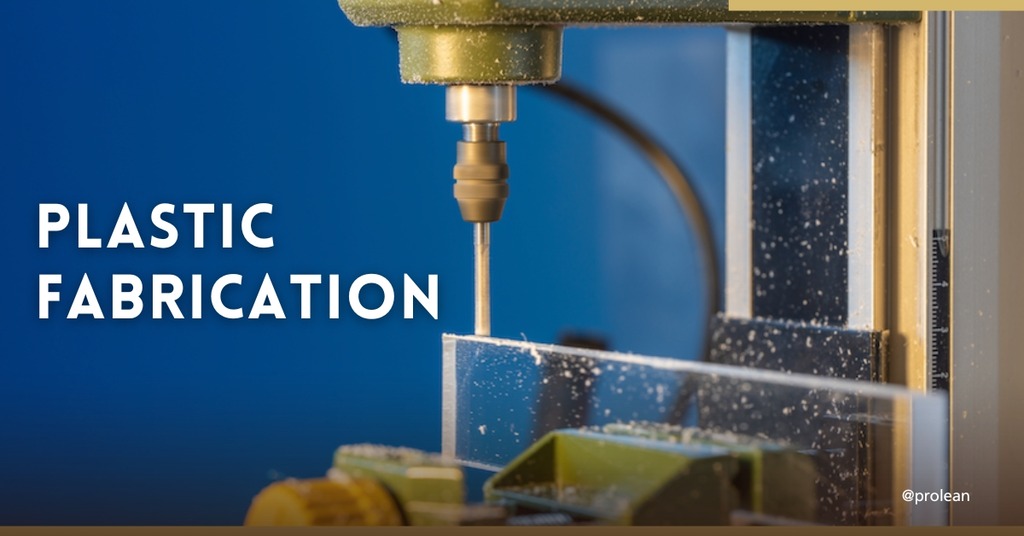
Plastics are applied in various industries because of their characteristics such as flexibility, strength, and reasonable price. In the contemporary world where time and cost are the key factors in production, plastics are economical and light materials that can be employed in different uses.
What Is Plastic Fabrication?
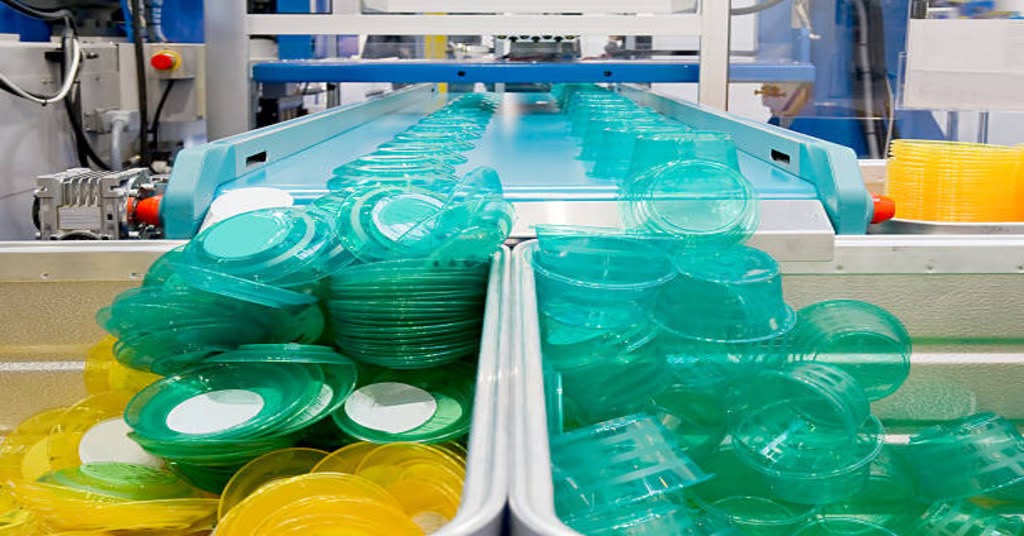
Plastic fabrication
Plastic fabrication is the transformation of the plastic material to the desired shape and size as may be needed. It is used in the manufacturing of many products from basic household products to sophisticated parts for industries. All custom plastic fabrication methods are versatile and can be applied to any type of plastic and for the product. As mentioned above, different types of plastics need to be processed in different ways to obtain the best outcome.
Try Prolean Now!
Selecting the Right Plastic Fabrication Method
Below are some questions that you should answer when choosing a fabrication method:
-
Are there any requirements for the use of single plastics or some of the blends of plastics?
-
What percentage of the material should be plastic and what percentage should be non-plastic for my product?
-
What role will plastic play in the process: Is it the adhesive, the laminated one, or the base material?
-
What is the size of the final product and its application?
Plastic Welding
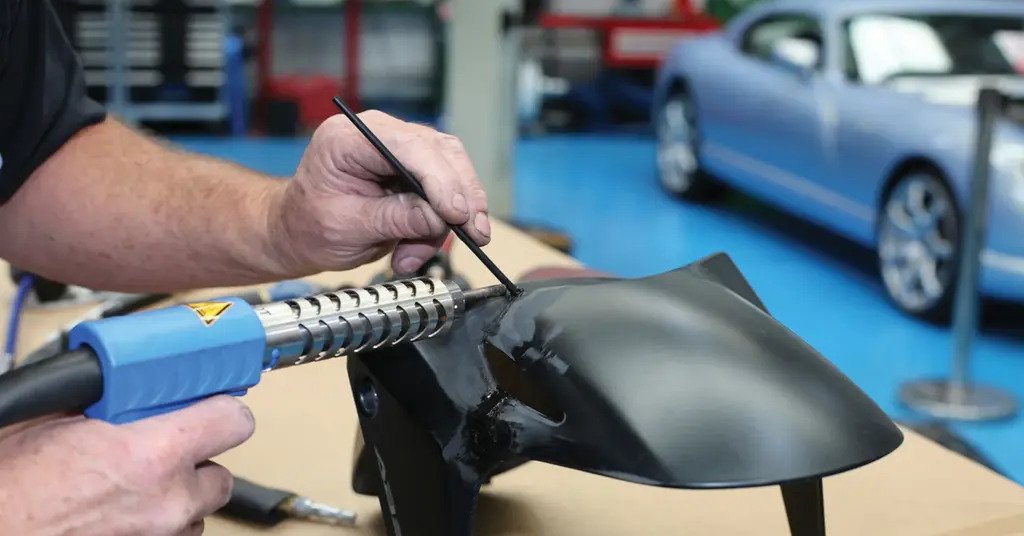
Plastic welding
Plastic Welding is commonly used in car body repairing items such as bumpers, headlights, and other auto spare parts. It is also used in the manufacturing of tanks and containers, pipes, heating ventilating, and air conditioning systems for piping.
Compounding
Co-extrusion or co-blending is a process of combining polymers to obtain plastics for a particular application due to the nature of the polymers. For instance, flame retardants for electrical products, improving the UV stability for outdoor products, or improving automotive parts.
Plastic Lamination
Plastic laminates are ideal where the item is to be used for some time, exposed to moisture, or where the appearance of the item is important. It is commonly applied in the packaging to shield the products from the elements of nature. This method is also used in laminated safety glass as well as in the decorative faces of furniture and cabinets.
Molding
Molding is a process that is made up of injection molding, blow molding, and rotational molding. This technique is optimally used for the production of large quantities of small and medium-sized products like toys, car accessories, and medical equipment. Blow molding finds use in manufacturing articles with a cavity such as bottles and containers. Among the products that can be manufactured employing rotational molding are large hollow goods for example tanks and kayaks.
Plastic Extrusion
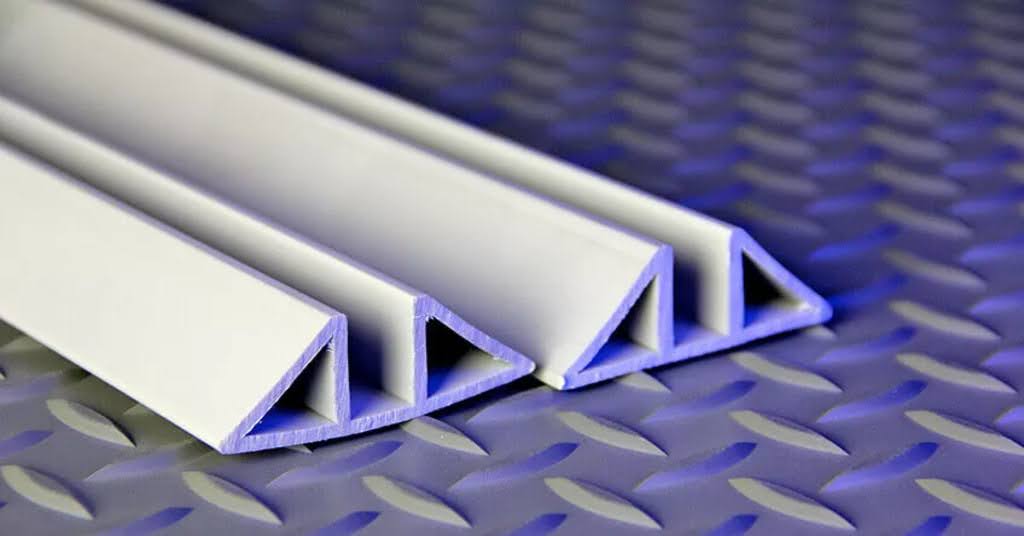
Plastic extrusion
Plastic extrusion creates products with uniform and unbroken cross-sections such as pipes, tubes, window frames, and profiles. It is used in the production of products that have to have cross-sectional shapes that are constant such as pipes in construction like the PVC pipes or plastic straws in the food industry.
Plastic Foaming
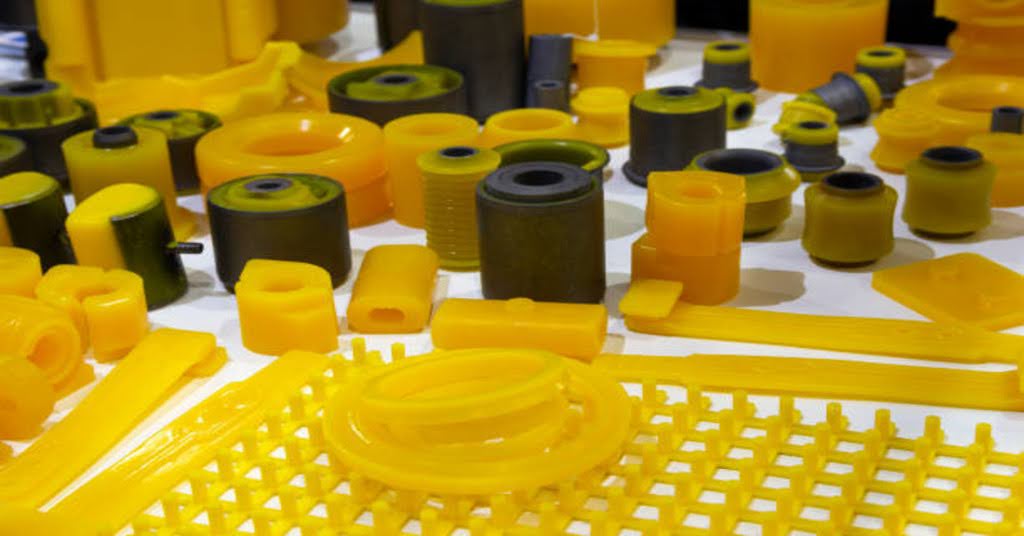
Polyurethane foaming parts
Foaming of plastics leads to the production of lightweight material which is useful in its application as an insulator, a cushion, and in packaging. For instance, polystyrene foam is used in the thermal insulation of structures, upholstery, and packing materials that require some form of cushioning.
Die Cutting
The die cutting is suitable for creating many slender and accurate plastic components. It is used in electronics for insulators and gaskets, in the medical field where products are single-use items that are disposed of, and in automobiles for interior trims.
Thermoforming
The detailed formed shape or structure is possible in thermoforming and that is why it is often used in packaging applications such as blister packs and food trays. It is also used in the automotive industry for large parts like instrument panels and door linings.
CNC Plastic Machining
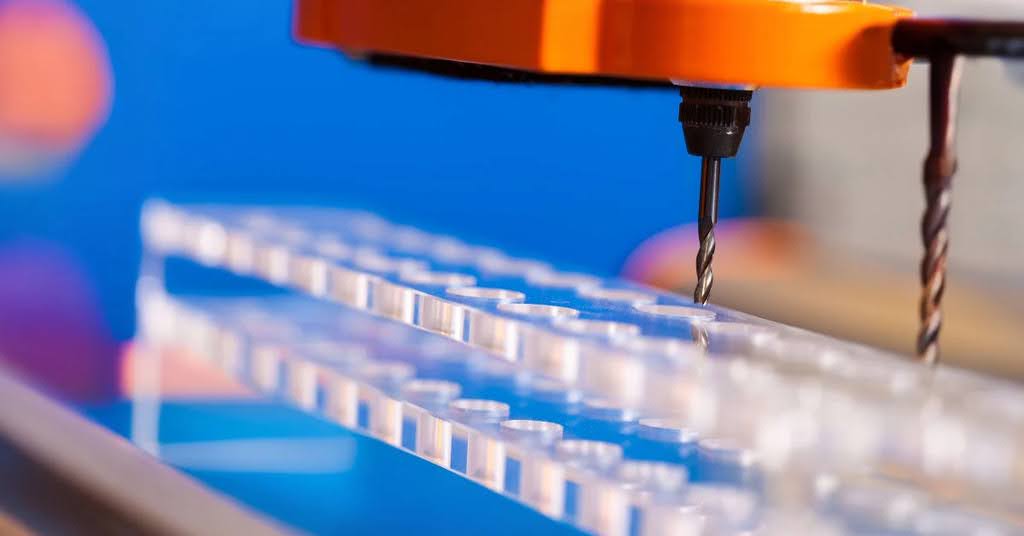
Plastic CNC machining
Plastic cnc machining is a subtractive, material removal process applied in the creation of intricate plastic parts from materials such as ABS, Nylon, PE, PP, and thermosets. This method uses Computer Numerical Control lathes, milling machines, turning centers, or any other relevant tool and multipoint cutting tools to remove material from the plastic workpieces and fashion them into the desired forms.
CNC technology controls the motion of tools and the cutting process so that the fabricated plastic parts have small tolerances of ± 0. “#005” and smooth surface finishes. Some methods of CNC machining are cutting, milling, turning, routing, drilling, and tapping. They allow such forms as deep holes and undercuts to be made. CNC-machined plastic parts are used in automotive, aerospace, medical, electronics, and many other industries for fabrication, prototype, bridge production, and large-scale production.
3D Plastic Printing
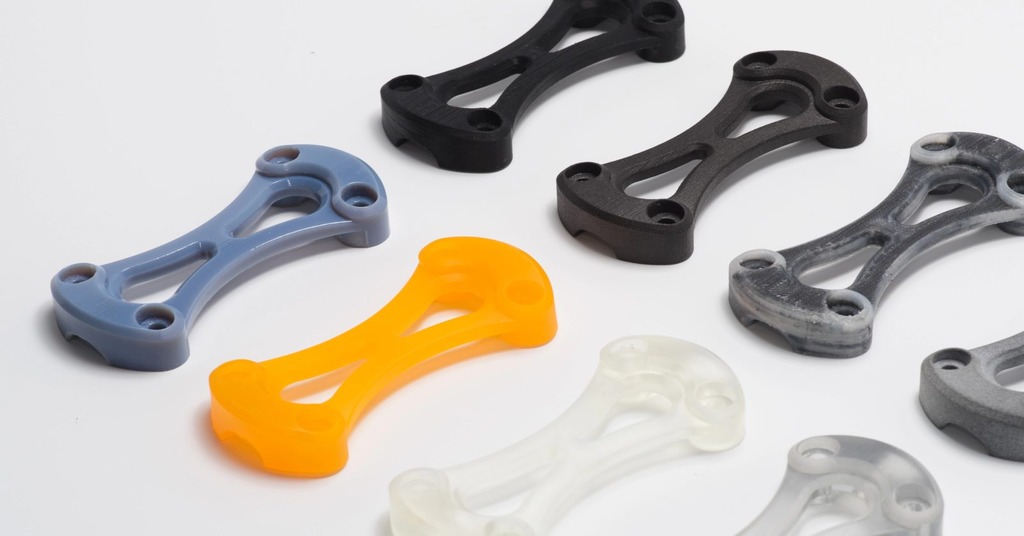
Plastic 3D printing
3D printing is the technique of using a computer-controlled print head to extrude molten plastic filament or fuse powdered plastic material according to a CAD file. The specific procedure of layering is also different in each of the 3D printing methods that are available.
- Stereolithography (SLA): This method entails the use of a UV laser to cure the layers of photopolymer resins to form the object in a layer-by-layer manner.
- Fused Deposition Modeling (FDM): This technique involves the use of thermoplastic filament where the filament is heated and extruded through a heated nozzle to deposit layers of the material.
- Selective Laser Sintering (SLS): This method uses a laser to sinter the powdered material to build parts and also in a layer-by-layer and successive addition manner.
As for 3D printing, it does not involve application-specific tools like in the case of machining or molding. It is very fast and precise, particularly for small production runs, and is well suited to the creation of plastic prototypes.
Step-by-step Custom Plastic Fabrication Process
The process of manufacturing finished plastic products from raw materials is very systematic. Each stage, including the designing stage and the delivery of the final product, is crucial in producing goods of the highest quality at the lowest cost possible.
- Conceptual Design and Planning
The fabrication process begins with the determination of the precise attributes that the product should possess. These are size, tolerance levels, mechanical strength, and chemical as well as temperature resistance. This is followed by the creation of a 3D concept to arrive at the first model of the product.
- Choosing the Right Material
The type of plastic material to use is very crucial to consider. The choice depends on the requirements for the material and the characteristics that are needed for the further use of the product.
- Preparing the Materials
The selected materials are then ready for fabrication. This includes operations such as extrusion, molding or even cutting of the raw plastic into shapes that are in a form to undergo other operations.
- Shaping and Forming
The prepared plastic materials are then shaped through methods like injection molding, thermoforming, or through the use of Computer Numerical Control machines. The technique to be used in the production of the product depends on the characteristics of the product and the quantity needed.
- Finishing and Assembly
If necessary, the subassemblies are incorporated into the final product. Other surface finishing could be deburring or flashing, surface polishing, painting, varnishing, or baking to improve the performance and aesthetics of the product.
- Quality Assurance and Inspection
All the products undergo quality control checks to ensure that they are of the required quality and standards. This involves Statistical Process Control(SPC) and inspection to check for any anomalies from the set specifications.
- Packaging and Shipping
The final products are packed in a way that they do not get spoilt or destroyed in transit. Packing also assists in minimizing the cases of damage to the items and they are received by the end-users in good condition.
All these steps are critical in the plastic fabrication process. The failure of any phase results in the creation of low-quality or mediocre products that do not satisfy the customer.
Try Prolean Now!
Which Materials Are Often Used In the Production of Plastics?
Plastic fabrication employs several materials and all the materials are used in fabrication in as much as the characteristics of the materials and the fabrication processes that are involved allow it. Here are some commonly used materials in plastic fabrication:
- Acrylic (PMMA)
Acrylic is a thermoplastic polymer that is highly transparent, has good UV stability, and is commonly known as polymethyl methacrylate (PMMA). Because of its low density and ability to withstand weather changes, it is applied in displays, signages, and lenses. Some of the techniques that are used in the formation of acrylic include the following; Computer Numerical Control (CNC) machining, laser cutting, and thermoforming.
- Polycarbonate (PC)
Polycarbonate is valued for its capacity of impact resistance and, simultaneously, it is a clear material. It is used in the manufacturing of protective apparel, glasses, and electrical and electronic items. Polycarbonate material is suitable for injection molding because it allows the production of strong and quality products in a short time.
- Polyethylene (PE)
Polyethylene is of various types and some of them are High-Density Polyethylene (HDPE) and Low-Density Polyethylene (LDPE). Polyethylene is chemically inert, flexible, and economical; it is used in pipes, household articles, and packing. The following are some of the methods that are used in the manufacturing of polyethylene products; Extrusion, blow molding, and injection molding.
- High-Density Polyethylene (HDPE)
HDPE is a very strong plastic with having high strength-to-weight ratio. It is used mainly in bottles, toys, and pipes production because it is chemically and impact-resistant and suitable for rough conditions.
- Polypropylene (PP)
Polypropylene is one of the most utilized types of plastic since it is very hard-wearing and does not degrade in chemicals. It is used in the textile industries, food industries for packaging and preparing food, and in-car industries. Polypropylene can be produced in several ways and some of them are injection molding and thermoforming and injection molding is most suitable for small and complex parts.
- Polyvinyl Chloride (PVC)
PVC is chosen for its properties of elasticity, and high tensile strength and is widely used in the manufacture of many goods such as medical instruments, vinyl tiles, and pipes. PVC decking is also very resistant to water and weather hence does not require much maintenance and has a long life cycle. The two most widely used techniques of fabrication of PVC are extrusion and injection molding.
- Polyethylene Terephthalate (PET)
PET has good clarity and high mechanical properties and for this reason, it is used in the packaging of carbonated beverages and foods. It is also recyclable, which makes it one of the best materials for packaging since it is environmentally friendly.
- Polyoxymethylene (POM)
POM is also known as acetal and it is used in gears and bearings because of its fine mechanical properties, chemical and wear strength. Some of the machining techniques that are used in the production of POM include CNC machining and injection molding that is suitable for the production of accurate parts.
- Polystyrene (PS)
Polystyrene is a hard plastic and falls under the category of uses that include packaging, disposable cutlery, and an insulating material. Polystyrene is produced from styrene monomer and when in the molten form can be shaped through molding or extrusion hence the uses. This type of matrix is widely employed since it is rather diverse and can be produced in large quantities.
Cost of Plastic Fabrication
The expense of plastic product manufacturing is influenced by several factors: the size of the part, the material that is used, and the method of fabrication that is employed. Basic molds cost approximately from $3,000 to $6,000. However, complicated, massive, or those that require high production volumes may go for as high as $25000 to $50000 or even more. In very complex work, costs can go beyond $100,000. The process of plastic fabrication goes beyond molding and entails other procedures. Consumer-level 3D printers for home use can be bought for $200 to $500 for the basic models.
For those with some experience, midrange 3D printers are in the range of $500 to $2000. Those who want the best quality can get advanced 3D printers that cost between $2000 and $10000. High-end 3D printers for industrial use, which can be used in the automobile industry, aerospace industry, medical industry, and other industries are in the range of $10,000 to $100,000.
Benefits of Plastic Fabrication
The following are the benefits of fabricating plastic; First, when steel or metal is substituted by plastic, the costs are cut by fifty percent. Also, flexibility is another feature of plastic that makes it even more appropriate for use since it is ductile. Let’s explore the specific benefits of the plastic fabrication process:
-
Cost-effective: Fabrication of the plastic parts is in most cases cheaper because it is possible to fabricate many parts in a given time say an hour.
-
Ease of forming: Plastics are ductile and have a low melting point hence making it very easy to mold to simple and complex products.
-
Reduced finishing: As for the case of plastics, the material can be colored before it is processed to make the final product; hence, painting the material is not required once the product is complete.
-
Faster production: The turnover rates in the fabrication of plastics are normally very high and the cycle time is also very high.
-
Chemical resistance: Normally, plastics are more resistant to chemical change than metals, for instance, rusting or oxidation.
-
Longevity: In the production of plastic products, little or no effort is employed in the maintenance of the end product hence it can have a long life span.
Disadvantages of Plastic Fabrication
The following are the negatives of plastic machining in the production of products:
-
Environmental impact: Some of them are non-biodegradable and as such they become a nuisance to the environment after some time.
-
Temperature limitations: Among the plastics, some are relatively easy to mold but they have some disadvantages particularly where heat is a factor.
-
Brittleness: Some plastics are very brittle and this simply implies that they are very hard and stiff and when force or an impact is applied on them they fracture.
-
UV degradation: This is so because when the finished plastic parts are exposed to light, especially sunlight they are likely to change color.
Plastic Fabrication Products
Plastic fabrication is used to create a wide variety of products, such as: The areas of utilization of plastic fabrication include the following products:
-
Everyday items: Plastic bottled soft drinks, processed foods packed in plastic containers and plastic bags.
-
Household and electronic goods: Toys, utensils, and electronic gadgets shells.
-
Automotive parts: Bonnet, wings, hoods, doors, pillars and instrument panels.
-
Medical supplies: Syringes, IV bags, and surgical gloves.
-
Building materials: Water conduits, insulation, and window sash.
Quality Level of Fabricated Plastic Parts
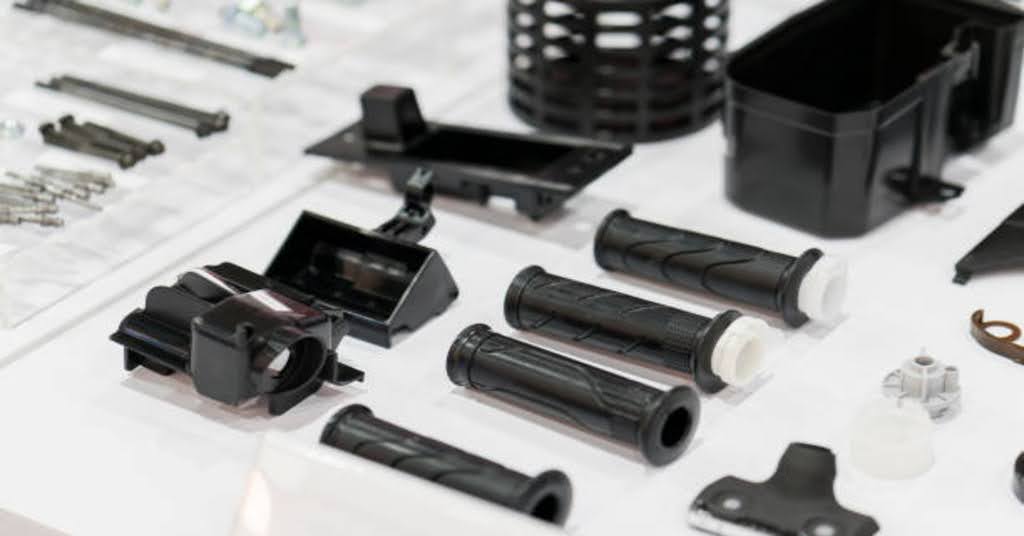
Precision plastic fabricated components
Depending on the type of material used, the way the product is made, and the design of the product, plastics are of two types, namely high-quality plastics and low-quality plastics. Strength, resistance, and size are the quality characteristics of high-quality plastics. However, if the company uses low-quality material or if the process of manufacturing is not good then the final product may be fragile, twisted, or may not have a long life.
Try Prolean Now!
How Long Can Plastic Fabricated Products Sustain?
Plastic machining or fabricated products can be very strong depending on the type of material that is used, the engineering behind it, and the type of finishing processes used. These go into the accumulation of the resistance to abrasion, impact, and the environment. On the other hand, if the material used is substandard or the manufacturing process is not well done then the products produced will not be very durable.
Plastic Fabrication and Plastic Extrusion: The Major Differences
Plastic fabrication may therefore be described as the process of manufacturing a plastic product through shaping, cutting, bonding, and constructing the plastic parts into end products. Extrusion is a special kind of fabrication that is used on plastics where the material is made to flow through a die and the cross-sectional thickness of the shape produced is the same along the length of the product. This technique is widely applied in the manufacture of pipes and tubes and the frames of window sashes.
Plastic Fabrication vs. Sheet Metal Bending
Plastic fabrication is one of the techniques of manufacturing goods with the use of plastics and the processes include the forming of sheet plastic. Some of the products produced from bent plastic sheets include; signs, displays, covers and enclosures, and light diffusers.
Sheet metal bending on the other hand is a process that is applied on thin metal sheets. It is used in forming metal sheets to the right size and surface finish and it mainly creates products such as brackets, casings, and panels. It is used in branches of industry such as construction and manufacturing since it enables the creation of complex patterns and individual parts. While the process of plastic fabrication is the process that uses a plastic material, sheet metal bending is the process that uses metal, which is comparatively stronger, more rigid, and more durable than plastic.
Summary
Plastic fabrication procedures are dynamically used for plastic parts and product manufacturing: injection molding, vacuum casting, extrusion, Computer Numerical Control (CNC) machining, and 3D printing. All these techniques have different material capabilities, process advantages, and disadvantages. The optimal selection of the method is influenced by factors such as the type of material, accuracy, design intricacy, and costs. In conclusion, plastic fabrication is a way of creating affordable and precise parts in various industries. The choice of the fabrication method and experienced fabricator like Prolean Tech plays a central role in the accomplishment of the intended objectives. Contact us now, and get a quote, for your project.

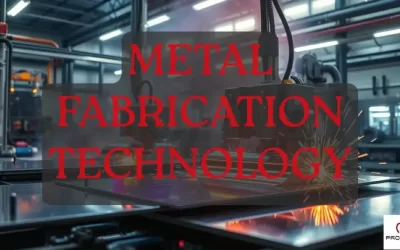
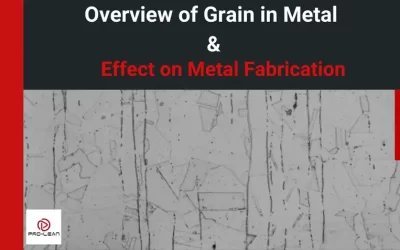
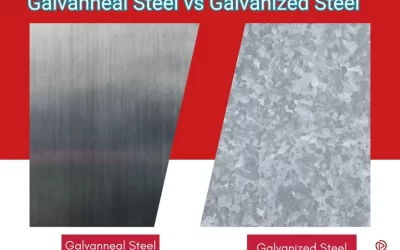
0 Comments